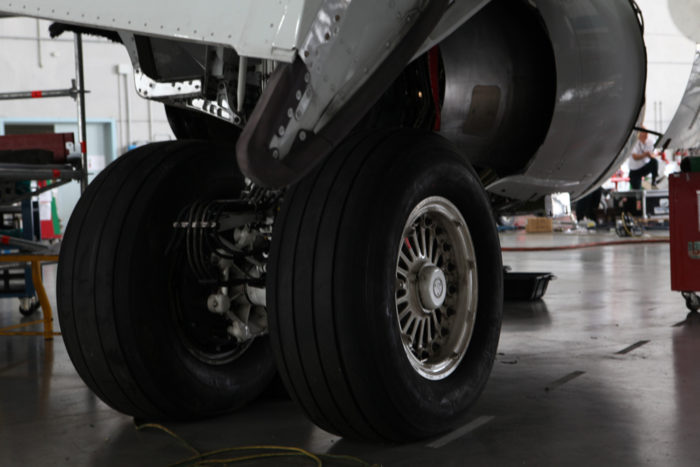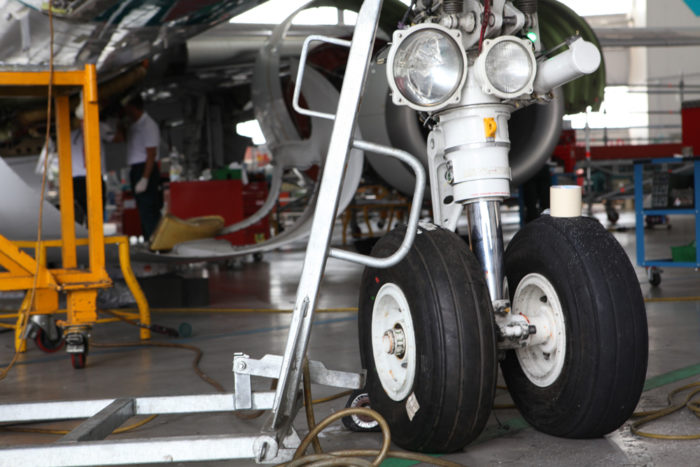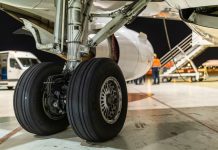Out of all of the many aircraft features, the one that most stands out, even for those who know very little about aeroplanes, is the landing gear. The wheels on which an aeroplane sit look extremely small compared to huge fuselages and wings, but the complex structure of the landing gear is designed to support the aeroplane’s weight and to resist the impact during landing.
For example, consider that one of our Embraer-195s with 120 passengers on board weighs in at approximately 46,000 kilos (45 tons). Not forgetting that an aeroplane’s speed at landing is around 250 km/h (155 mph). That amount of impact requires a lot of cushioning.
The landing gear comprises a retractable structure assembled on wheels and is only used during ground manoeuvres at take-off and landing. Once in the air, the gear retracts inside the fuselage or into the wings, depending on the aircraft model and size.
In the past, before the invention of retractable landing gear, aircraft wheels were assembled on fixed units that generated a lot of air resistance. Between the 1920s and 1930s, the first basic retractable mechanisms started to spread, marking a new generation of fighter aircraft used during the Second World War.
Retractable gears are moving mechanical components and so they are more complex and heavier, but their invention has brought so many advantages in terms of performance that it’s worth the increased maintenance compared to fixed landing gear.

Today, the procedure for monitoring landing gear is conducted by pilots and technicians before each flight. Firstly, they check the wear level of tyres and brakes, moving on to complete specific tests to rule out any anomalies in the hydraulic or electrical system operating the landing gear.
Did you know? The cushioning in the landing gear is achieved by using a system of nitrogen- and oil-filled chambers and pistons.
In case of emergency, landing gear is always guaranteed to come out through a free-fall system, which is manually activated by the pilots and uses aerodynamic weight and flow in order to achieve the landing configuration.
Here’s a challenge for you: next time you fly, pay attention to the sounds! The rumble you’ll hear shortly after taking off, together with the sound of whistling air, which reduces as the aeroplane goes up, means that the landing gear is going back inside the plane. At the other end of the journey, the unhooking rattle that you’ll hear before landing means that the landing gears are coming down and that you are about to arrive at your destination.
See you on your next flight!




